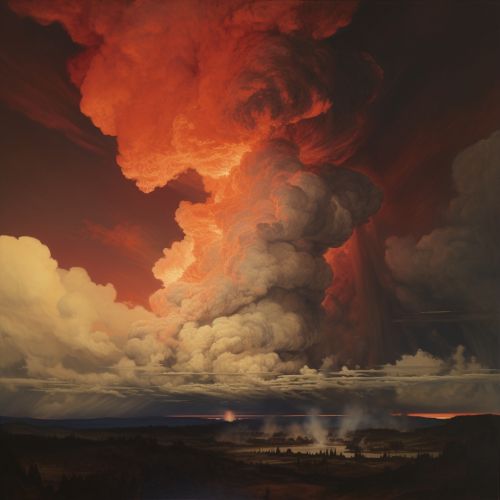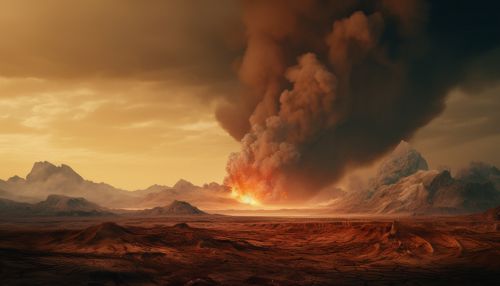Phreatomagmatic Eruption
Introduction
A phreatomagmatic eruption is a type of volcanic eruption that occurs when magma comes into contact with water. This can occur either when a volcano is situated under a body of water, such as a lake or ocean, or when groundwater or precipitation infiltrates the volcanic system. The interaction between the hot magma and the water results in a violent explosion, which is characterized by the production of fine-grained tephra, steam, and a large amount of gases.


Mechanism of Phreatomagmatic Eruptions
Phreatomagmatic eruptions occur due to the intense heat of magma coming into contact with water. This causes the water to rapidly convert into steam, which expands and causes an explosion. The explosion fragments the magma and surrounding rocks, producing tephra. This process is known as magma-water interaction or MWI.
The magma involved in phreatomagmatic eruptions is often of a more viscous type, such as andesite, dacite, or rhyolite. These types of magma have a high silica content, which makes them more resistant to flow. This resistance can lead to a build-up of pressure as gases within the magma are unable to escape, contributing to the explosive nature of phreatomagmatic eruptions.
Characteristics of Phreatomagmatic Eruptions
Phreatomagmatic eruptions are characterized by several distinctive features. These include the production of fine-grained tephra, the creation of maar craters, and the emission of large amounts of steam and gases.
Tephra
Tephra produced by phreatomagmatic eruptions is typically fine-grained due to the fragmentation of the magma and surrounding rocks during the explosion. This tephra often forms a deposit known as tuff, which can be identified by its characteristic layered appearance. The layers are formed by successive eruptions, with each layer representing a separate eruptive event.
Maar Craters
Another characteristic feature of phreatomagmatic eruptions is the creation of maar craters. These are broad, shallow craters that are formed by the explosive interaction of magma and water. The craters are often filled with water, forming a maar lake.
Steam and Gases
Phreatomagmatic eruptions also result in the emission of large amounts of steam and gases. These include water vapor, carbon dioxide, sulfur dioxide, and other volatile compounds. The steam and gases are released into the atmosphere, often forming a large, billowing cloud above the volcano.
Examples of Phreatomagmatic Eruptions
There have been many documented instances of phreatomagmatic eruptions throughout history. Some notable examples include the 1883 eruption of Krakatoa in Indonesia, the 1980 eruption of Mount St. Helens in the United States, and the 2010 eruption of Eyjafjallajökull in Iceland.
